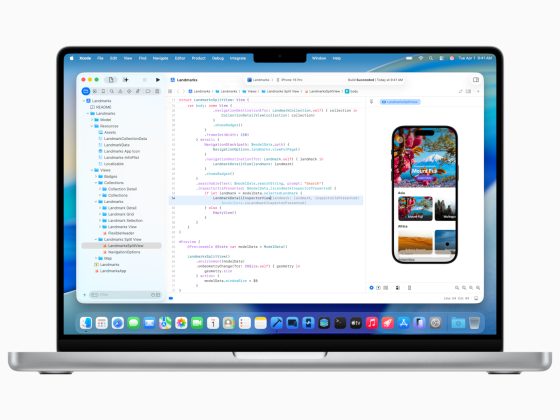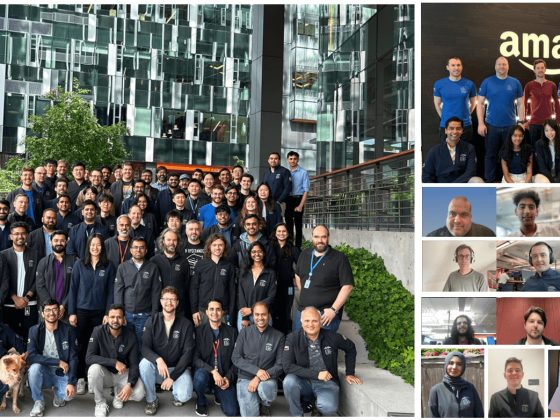Cloud providers are becoming commoditized, so you have to be careful to determine where the best value lies.
In the rapidly evolving landscape of IaaS cloud computing, public cloud providers are increasingly reaching feature and function parity. This means they are beginning to look alike.
From our partners:
Before you keyboard warriors remind me that some obscure feature in the object storage system on one provider is better than the object storage feature on another provider, I know they are not exactly the same. I think it’s okay to consider that they are all moving to a similar group of services that do the same things.
How did it get this way?
This development creates a competitive dynamic between these providers and offers new opportunities and challenges for enterprises. If we have three major cloud providers and three other providers that are catching up quickly, then it’s no longer reasonable to point to a single provider as the one to use. There’s no “best cloud” anymore.
Leading providers such as AWS, Microsoft Azure, and Google Cloud Platform have spearheaded innovation, making significant investments in cloud capabilities across the board. The market for their services is pretty much the same: enterprises. And enterprises are mainly asking for the same things. They need to store, process, make sense of data, and host applications.
Cloud providers, looking to move to meet those needs, made many of the same calls regarding what services to build and operate. Also, if you look at who’s building those services, the reasons for their similarities snap into focus. In the past 15 years, executives and developers have shifted from cloud provider to cloud provider, taking their ideas from cloud to cloud. Thus, it should be no surprise that object storage and serverless systems look alike.
Don’t call it ‘commoditizing’
Want the public cloud providers to have a hissy fit? Tell them they’re becoming a commodity. Everything moves in that direction, so why not them? I’m not cheerleading for public cloud providers. It’s fair to say they have done more things well than poorly during the past 15 years. They all have good horizontal and virtual scalability and a pretty good uptime record compared to your own systems in an enterprise data center. So, in what areas can they differentiate themselves?
Scalability is a must for enterprises that need to rapidly meet demand without compromising performance or security. Providers have enhanced their scalability and integration capabilities, ensuring they can accommodate the needs of enterprise-level operations. However, they charge for this service, and many enterprises have recently complained about these “surprise cloud bills.” This is compared to traditionally owned hardware, where scalability is a sunk cost. Of course, you would have to purchase more hardware at some point and pay somebody to install it and watch it. Public clouds are not forcing you to do that, which is why we’re on public clouds in the first place.
Marketplace ecosystems are another differentiating factor among cloud providers, with offerings ranging from third-party applications to integrations and certified partners. AWS, for example, boasts a significant market advantage with its vast AWS Marketplace. Google Cloud Platform and Microsoft Azure are just a little behind, offering comprehensive marketplaces that cater to a myriad of enterprise needs, but functionally, they do the same thing.
Generative AI and machine learning capabilities present yet another frontier in the feature parity race. While many enterprises view these as recent innovations, AI has been offered by all the major providers; indeed, in some cases, it’s the same services on different clouds. Such is the case with many of the open source AI solutions.
Cloud providers view genAI as a new way to differentiate their cloud offering from others. However, it would be best to consider what you’d use over the next few years in their cloud stack: storage, computing, databases, and the fundamentals. AI may come into play, but you should not choose a cloud solely based on its ability to support an AI tool set that you would use for at least five years. This behavior drives terrible decisions that lead to poor business outcomes.
Parity in cloud features and functions
If the cloud providers are mostly the same for many basic features, such as storage, computing, databases, AI, etc., can enterprises leverage this evolution to get more value? Maybe. Vendors have pricing strategies. They understand you can purchase object storage from another cloud provider. They understand how to sell around this issue and swing the conversation to the unique features that set them apart. Of course, most of these features are ones you’ll never use. Consider buying the heated steering wheel option in your new truck for $1,000 when you live in Hawaii.
I can’t tell you the number of times I’ve asked why one service from one provider was picked over another service offered by another provider and gotten the hugely unsatisfying response that they thought they would someday need a specific feature only that cloud service provided. Was it worth the additional $500,000 over five years?
As public cloud providers reach feature and function parity, enterprises are encouraged to look beyond the feature sets when choosing a provider. Factors such as pricing strategies, regulatory compliance, and the geographic availability of data centers become critical considerations. They always should have been. Too often, enterprises consider these “extraneous features,” only to find that their expansion to the Middle East means leaving a point of presence, and then finding there is none. No one bothered to ask.
Furthermore, consider the importance of managed services. They provide enterprises necessary support to navigate their cloud journey beyond just keeping things running. Managed services work best for organizations that are unwilling to invest in layers of their own talent. Also, customer service, the ability to get the support you need, and other features are too often overlooked.
The same principles apply to cloud services today when products and services look the same across competitors. Don’t fall into the trap of thinking you’re stuck with a specific provider due to an alliance formed by a press release 10 years ago. All clouds and all services are on the table. Using the right services for the right reason will help you find more value in all this cloud stuff.
By: David Linthicum (Contributor, InfoWorld)
Originally published at: InfoWorld
Source: cyberpogo.com
For enquiries, product placements, sponsorships, and collaborations, connect with us at [email protected]. We'd love to hear from you!
Our humans need coffee too! Your support is highly appreciated, thank you!








